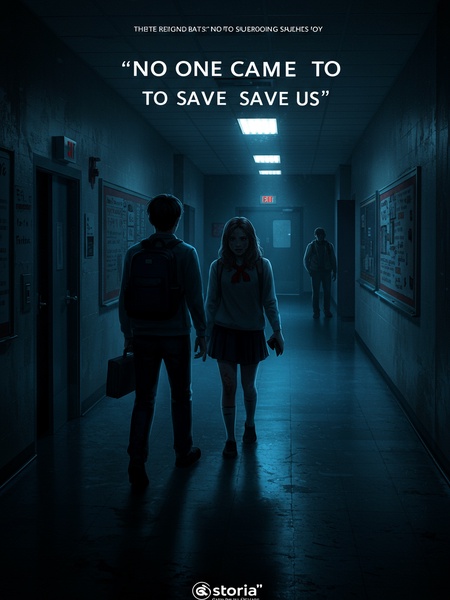Chapter 4: The Final Stand at the Airfield
With no other options, the police resorted to their final plan: ambushing snipers at the airport.
The snipers, hastily assembled and barely trained for the job, took their positions under the harsh glare of floodlights. The weight of the world was on their shoulders, and they knew it.
But another problem surfaced. The police had assumed there were only four or five terrorists, so they only posted five snipers.
It was a fatal miscalculation. Five marksmen to cover eight targets—it didn’t take a math whiz to spot the flaw. In the States, SWAT commanders would later shake their heads, vowing never to make the same mistake.
And these snipers weren’t professionals, just hobbyist marksmen from the regular police force.
It was like asking weekend deer hunters to play Navy SEALs—everyone watching knew it was a setup for disaster. Most had never fired a shot in anger. They were weekend shooters, not elite operators. The pressure was overwhelming. Some would later say their hands shook so badly they could barely aim.
To make matters worse, their equipment was cobbled together at the last minute—no real sniper rifles, no night vision, and no proper gear.
They were armed with hunting rifles and flashlights, woefully outmatched. In American police academies, the footage would become a case study in what not to do.
At 10:30 p.m., the helicopters landed at the air force base. The terrorist leader went to inspect the passenger plane, found it empty, and realized they’d been duped.
The moment of discovery was electric. Tensions exploded as the terrorists spun around, eyes wild with betrayal. The hostages’ fate was sealed in that instant.
He rushed back to the helicopter, and at that moment, gunfire erupted as the snipers opened fire.
Shots cracked through the night, chaos erupting in an instant. The world watched, breathless, as the rescue attempt spiraled into a gunfight.
A true sniper’s job is to kill with one shot, but for these "amateurs"—lacking both training and equipment—missing was inevitable.
Bullets went wide, ricocheting off metal and asphalt. The element of surprise was lost, and with it, any hope of a clean rescue.
The terrorists, not killed outright, were able to return fire. The two sides exchanged gunfire for half an hour.
It was a running battle, smoke and screams filling the night air. The hostages huddled in terror, caught in the crossfire. Emergency lights flickered, sirens wailed, but order never came.
You’d expect the police to quickly overwhelm the terrorists with superior firepower, so why did the standoff drag on?
The answer was bitter and simple: they were outmatched, outgunned, and outplanned at every turn. The world watched in horror as minute after minute ticked by, hope fading with each new volley of gunfire.
It turned out the six armored vehicles the police had prepared were stuck on the road.
The armored trucks sat bumper-to-bumper behind a sea of news vans, their engines idling while the world waited for a miracle that wouldn’t come. The kind of logistical blunder that would make headlines for years. The vehicles sat useless in a traffic jam, blocked by news vans, gawkers, and a chaos no one could control. It was an American parade, but in reverse—no one cheering, everyone watching in dread.
Too many reporters and onlookers had rushed to the scene, clogging the roads.
It was a circus, with tragedy at its center. The press, hungry for the story, unwittingly became part of the disaster. The lesson wasn’t lost on American law enforcement—sometimes, too much freedom of the press can cost lives.
It wasn’t until 11 p.m. that the armored vehicles finally arrived and prepared to storm the helicopters.
By then, the worst had already happened. The vehicles rumbled onto the tarmac, engines roaring, but the damage was done. The final act was already in motion.
Realizing all was lost, the terrorists pulled the pins on their grenades and hurled them into one helicopter, then sprayed the other with gunfire.
The explosions lit up the night, shattering windows and hearts in equal measure. The spray of bullets was merciless, a final, brutal punctuation to a night of horror.
By the end, all nine hostages were dead, one West German police officer was killed, five terrorists were shot dead, and three were captured.
The numbers told the story—no heroes, no happy ending. In living rooms from Brooklyn to Boise, families stared at the static, feeling a little less safe, a little more alone. The grief was universal, and the blame game had just begun. In American homes, people switched off their TVs in stunned silence, wondering if the world would ever feel safe again.
It’s worth noting that one hostage was still showing signs of life and could have been saved in time.
A faint heartbeat, a whisper of breath—hope flickered for a moment. But the chaos and confusion cost him his chance.
But the ambulance didn’t arrive for over an hour, missing the critical window for rescue.
By the time help arrived, hope had bled out on the tarmac—lost to paperwork and crossed wires. An hour might as well have been a lifetime. The failure haunted first responders for years, a ghost that never quite went away.
In this operation, the West German police’s weakness and incompetence were undeniable, but even that wasn’t the most outrageous part:
At that time, West Germany...
Continue the story in our mobile app.
Seamless progress sync · Free reading · Offline chapters